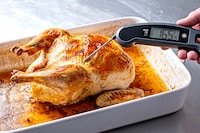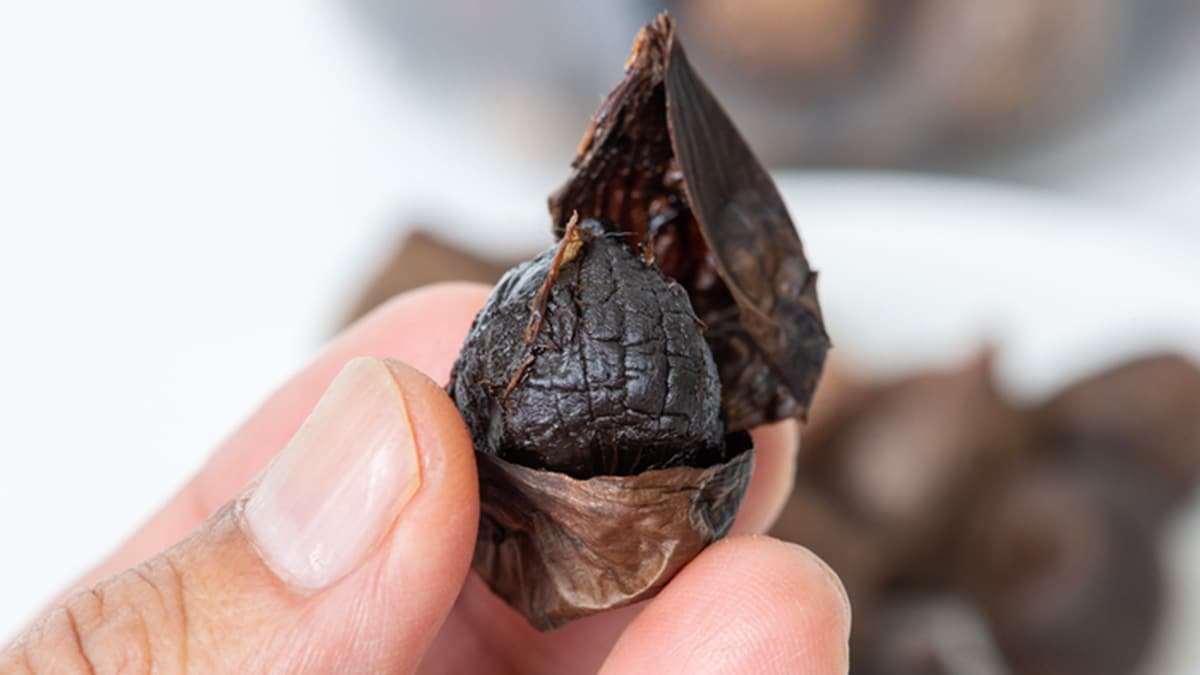Touch upon this story Remark Reward Article Share
Anybody who has cooked hen or turkey has in all probability had the expertise of reducing into the chicken solely to be chagrined or disillusioned — or each — to seek out the meat appears to be like bloody or pink (and never the nice sort of perky Barbie pink). Wp Get the complete expertise. Select your plan ArrowRight I don’t blame anybody for the disgrace spiral. In any case, it’s simple to fret that seemingly undercooked hen displays poorly in your expertise within the kitchen. Plus there’s the actual concern about meals security.
So let me put you comfortable. Pink or bloody-looking poultry is usually not your fault, and, in actual fact, could also be fit for human consumption, so long as it has reached the proper inside temperature (extra on that beneath).
Many individuals are snug with pink or uncommon beef and even pork, below some circumstances. However hen is one other matter, understandably so: The risks of undercooked poultry, specifically salmonella, have been emphasised by meals security consultants for years.
Commercial
“Individuals have been skilled, and they won’t eat pink hen,” says cookbook writer Meathead Goldwyn, whose web site, AmazingRibs.com, is a superb useful resource for these within the science of grilling. “It’s powerful generally to eliminate that pink with out turning it into cardboard.”
Oh and the oft-cited recipe instruction to prepare dinner hen till the juices run clear? That’s not your good friend both. Right here’s what it is advisable learn about why your hen or turkey could be pink and the way to ensure it’s fit for human consumption.
White and darkish meat are completely different. The protein myoglobin is “one of many transportation automobiles that strikes oxygen” across the physique, Goldwyn says. It mixes with water to type “myowater,” which is the pink-hued liquid — not blood! — you typically discover in packages of uncooked meat. As a result of it helps muscle tissues that do a number of work, myoglobin is present in increased quantities in legs and thighs, therefore their categorization as darkish meat, clarify Dan Souza and Alyssa Vaughn at Cook dinner’s Illustrated. This increased focus of myoglobin in darkish meat means it’s extra probably you’ll find yourself with pink spots there due to a few of the elements that I’ll go into shortly.
Commercial
Chickens are slaughtered younger. These which can be processed for meat are sometimes simply 6 to eight weeks outdated. At that age, based on the USDA, the bones haven’t fully hardened, so “pigment from the bone marrow seeps by means of the bones and into the encircling space.” This may result in a darkish or bloody-looking look. Freezing exacerbates the issue, as ice crystals can puncture the bone and launch extra marrow. Furthermore, the shortage of fats below the pores and skin of younger chickens permits extra oven gases to get by means of to the meat, which may additionally create a pink tint, the USDA says.
Sure cooking strategies can really protect a pink colour. Myoglobin begins to show brown at 140 levels, Morgan Bolling writes at Cook dinner’s Nation. However that isn’t at all times the case. Goldwyn says that the nitric oxide current in smoke can stop that change of colour, which is what explains the coveted smoke ring (a layer of pink meat just below the floor) you’ll find in smoked or grilled meals. Equally, “nitrates and nitrites, which are sometimes used as preservatives or might happen naturally within the feed or water provide used, could cause a pink colour,” the USDA says.
How the animal was raised or slaughtered issues. The acidity of meat can impression the colour as nicely. As Goldwyn found in his deep dive on the subject, meat with a better pH, or low acidity, can retain a pink hue from the myoglobin to a lot increased temps, as much as 170 or 180 levels. That increased pH is usually a results of how the animal was raised, pre-slaughter stress or climate-related elements.
All that issues is the temperature, not colour. One of the best factor you are able to do to gauge the doneness of your hen, amongst different issues, is to make use of an excellent digital thermometer, Goldwyn says.
Commercial
The USDA recommends that every one poultry be cooked to an inside temperature of 165 levels to cut back the probability of foodborne sickness, although darkish meat might be juicier at temperatures as much as 195 levels. Don’t depend on the colour of the meat or juices to find out whether or not hen is able to eat. In the event you’re making an attempt to eliminate the pink, you might find yourself with dry, stringy hen, since myoglobin can in sure circumstances require a better temperature to show brown.
Goldwyn says he has encountered resistance to thermometer use due to a false impression that poking the meat will trigger it to dry out. Nonetheless, meat is 75 p.c water to start with, and any loss from the holes created by the thermometer probe is minimal. “You lose way more throughout evaporation and drip loss into the fireplace,” he says.
One other phrase on temps: Eliminating bacterial threat depends on plenty of elements past a single temperature level, together with moisture and fats content material, J. Kenji López-Alt notes in “The Meals Lab.” The mix of temperature and time might help decide when chickenis fit for human consumption. He says that hen cooked to 155 levels and held there for about 44 seconds permits for a enough discount in micro organism; at 160 levels, it’s about 14 seconds. In the event you really feel snug with this matrix, go for it. If you wish to persist with the USDA recommendation as a result of it feels safer and simpler, please do.
Reward this text Reward Article


